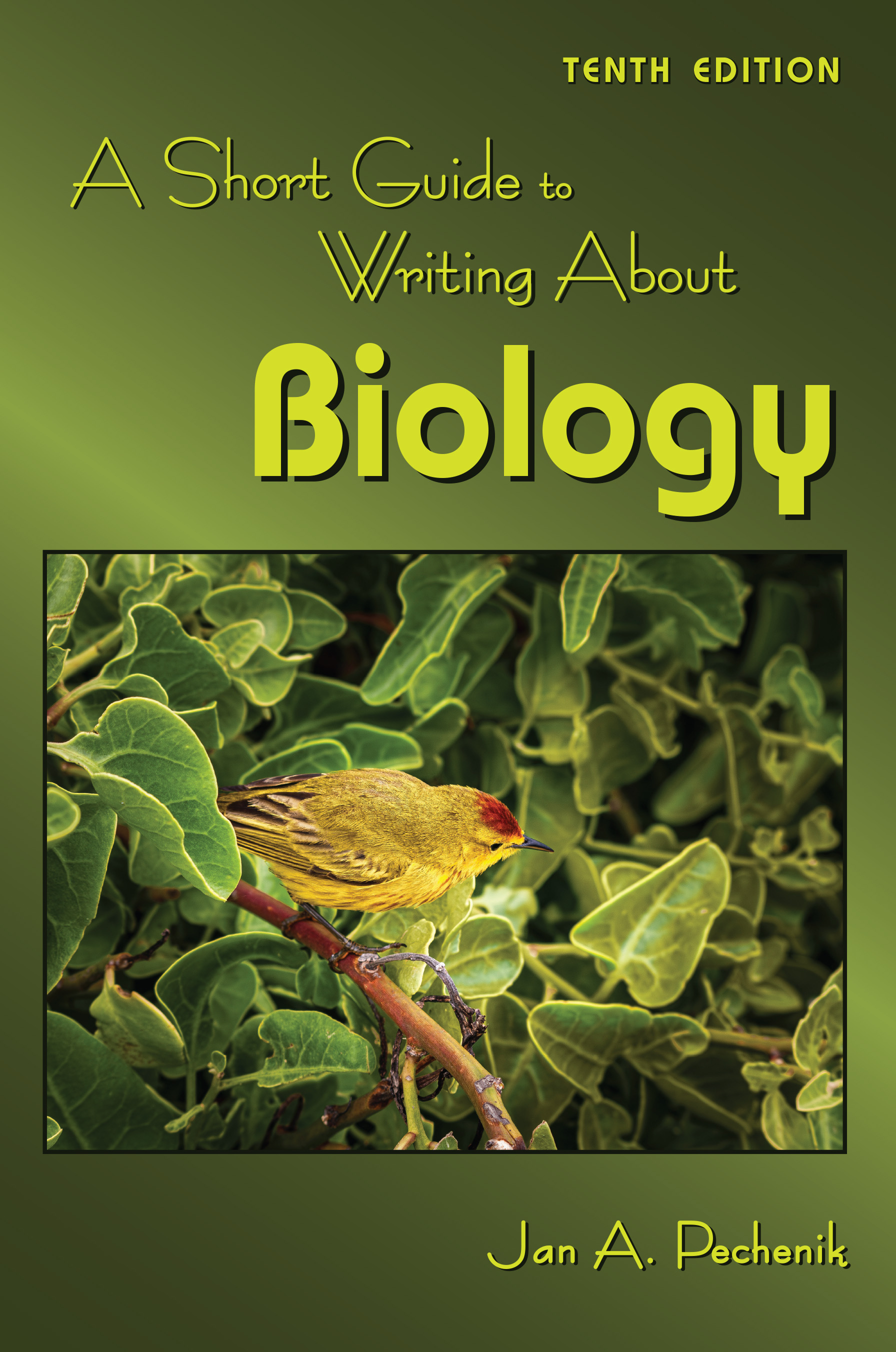Part I: GENERAL ADVICE ABOUT WRITING AND READING BIOLOGY
1. Introduction and General Rules
2. Locating Useful Sources
3. General Advice on Reading, Note-Taking, and Avoiding Plagiarism
4. Reading and Writing About Statistical Analyses
5. Citing Sources and Listing References
6. Revising
Part II: GUIDELINES FOR SPECIFIC TASKS
7. Writing Summaries, Critiques, Essays, and Review Papers
8. Answering Essay Questions
9. Writing Laboratory and Other Research Reports
10. Writing Research Proposals
11. Presenting Research Findings
12. Writing Letters of Application

269 pages, $34.95 list
1-4786-5327-2
978-1-4786-5327-1
© 2025
paperback
eBook availability
A Short Guide to Writing about Biology
Tenth Edition
For almost four decades, A Short Guide to Writing About Biology has been an indispensable resource. Noted biologist Jan Pechenik guides readers in acquiring the skills necessary to become critical thinkers and accomplished writers. Biology is a way of thinking about the world; it is also about communicating information accurately, logically, clearly, honestly, and concisely. The tenth edition outlines all aspects of writing well while also providing readers with procedures for developing strong research questions, logically explaining findings, and supporting claims with evidence. All good writing involves both a struggle for understanding and a struggle to express that understanding. The author delivers sage advice in an accessible, entertaining style to help readers learn to write compelling papers—and to enhance their understanding.
Part I reviews key principles that characterize all sound scientific writing. Readers learn to find useful sources, to read and evaluate articles, to take notes, to connect one’s work to existing scholarship, to understand data found in tables and figures, to write about statistics, to cite sources, and to revise their writing effectively. Part II addresses writing assignments: summaries, critiques, essays, reviews, laboratory reports, research papers, research proposals, presentations of research findings (oral presentations/poster presentations), and writing good application letters.
A Short Guide to Writing About Biology emphasizes writing as a means to examine, evaluate, refine, and communicate ideas. Through teaching readers to think as biologists and to express discoveries precisely and succinctly, the tenth edition is an invaluable tool for academic and professional success. Effective writing is an art with countless applications.
Part I reviews key principles that characterize all sound scientific writing. Readers learn to find useful sources, to read and evaluate articles, to take notes, to connect one’s work to existing scholarship, to understand data found in tables and figures, to write about statistics, to cite sources, and to revise their writing effectively. Part II addresses writing assignments: summaries, critiques, essays, reviews, laboratory reports, research papers, research proposals, presentations of research findings (oral presentations/poster presentations), and writing good application letters.
A Short Guide to Writing About Biology emphasizes writing as a means to examine, evaluate, refine, and communicate ideas. Through teaching readers to think as biologists and to express discoveries precisely and succinctly, the tenth edition is an invaluable tool for academic and professional success. Effective writing is an art with countless applications.